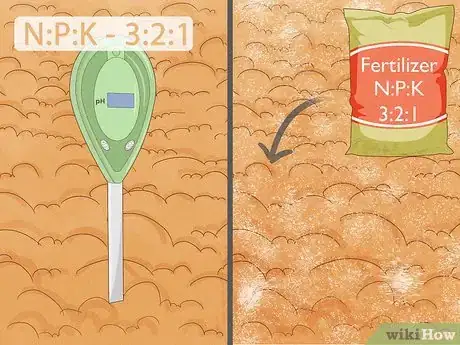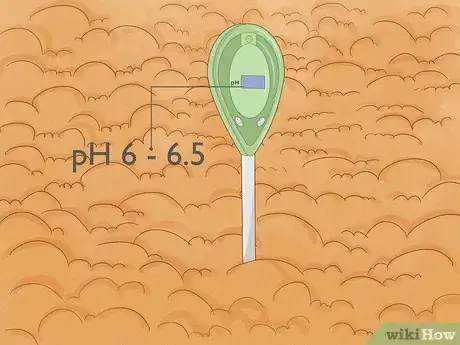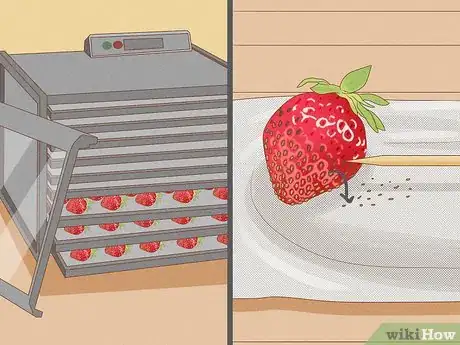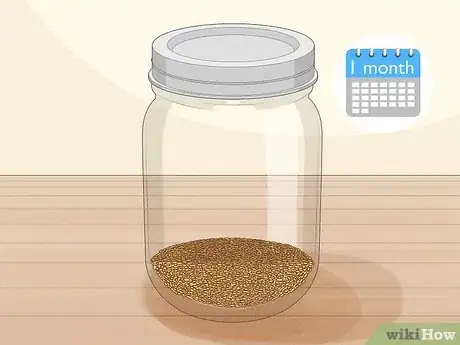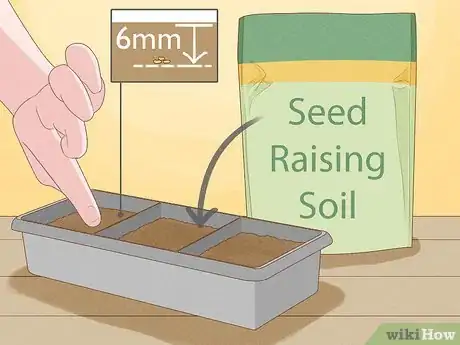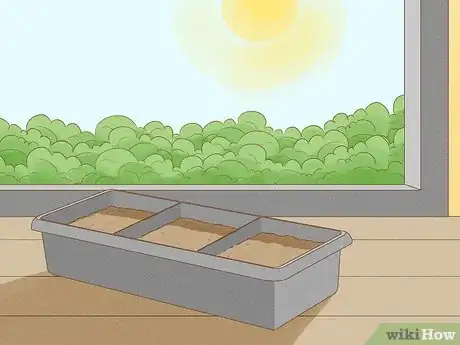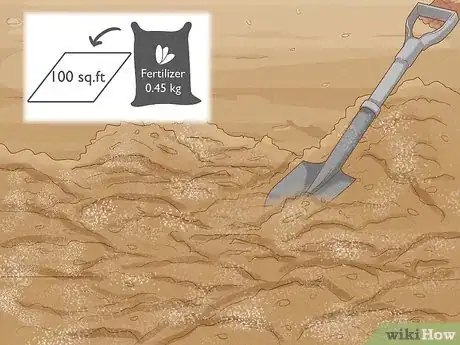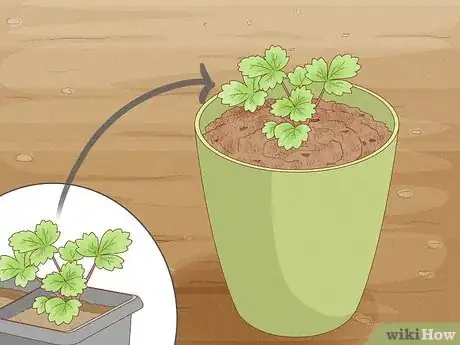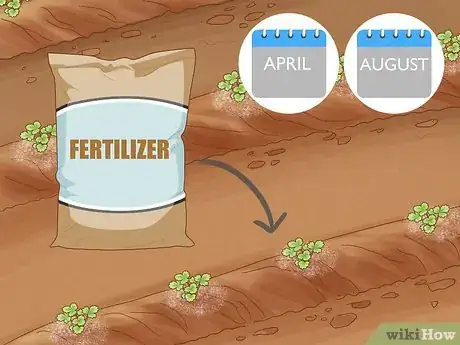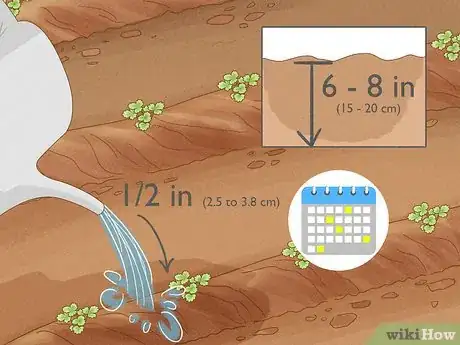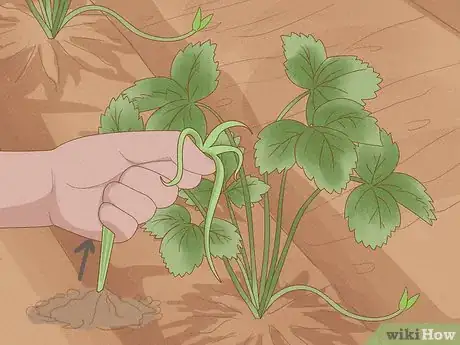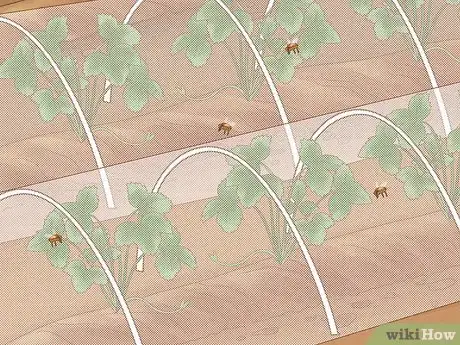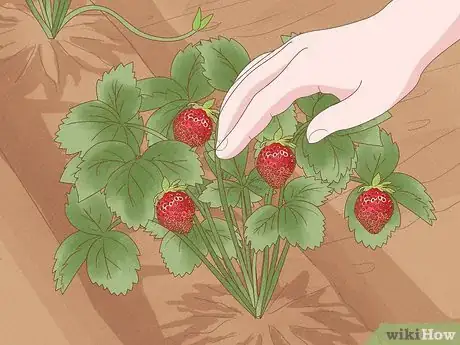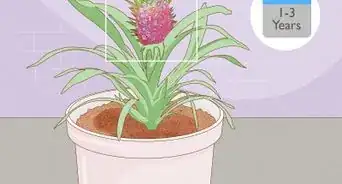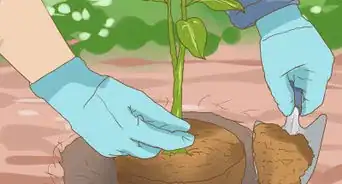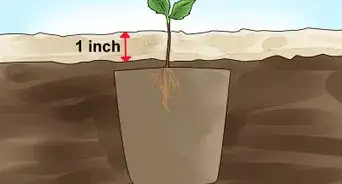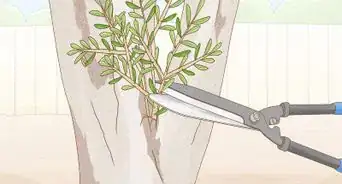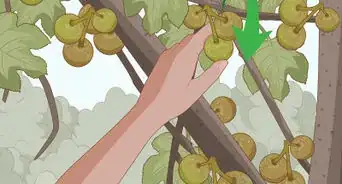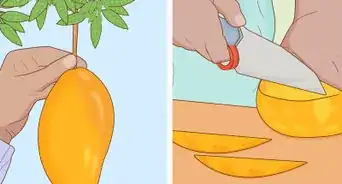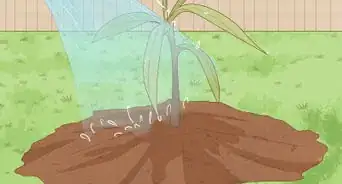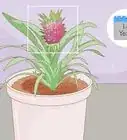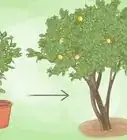This article was co-authored by wikiHow staff writer, Janice Tieperman. Janice is a professional and creative writer who has worked at wikiHow since 2019. With both a B.A. and M.A. in English from East Stroudsburg University, she has a passion for writing a wide variety of content for anyone and everyone. In her free time, you can find her working on a new crochet pattern, listening to true crime podcasts, or tackling a new creative writing project.
There are 24 references cited in this article, which can be found at the bottom of the page.
wikiHow marks an article as reader-approved once it receives enough positive feedback. In this case, 100% of readers who voted found the article helpful, earning it our reader-approved status.
This article has been viewed 122,749 times.
Learn more...
Do you love strawberries? This sweet, delicious fruit is a refreshing treat during the warmer months; plus, you can grow them right at home. While it’s generally easier to grow strawberries from seedlings, you can also grow this fruit directly from a seed. We’ve outlined the process from start to finish, so you can start growing a strawberry crop of your very own!
Steps
Community Q&A
-
QuestionHow long does it take to get strawberries to grow from seeds?
 wikiHow Staff EditorThis answer was written by one of our trained team of researchers who validated it for accuracy and comprehensiveness.
wikiHow Staff EditorThis answer was written by one of our trained team of researchers who validated it for accuracy and comprehensiveness.
Staff Answer wikiHow Staff EditorStaff AnswerIt depends on the type of strawberry you’re growing! Some varieties, like everbearing and day-neutral, will produce fruit in the first growing season, while others, like June-bearing, won’t be ready to harvest until the second growing season.
wikiHow Staff EditorStaff AnswerIt depends on the type of strawberry you’re growing! Some varieties, like everbearing and day-neutral, will produce fruit in the first growing season, while others, like June-bearing, won’t be ready to harvest until the second growing season. -
QuestionIn how many weeks are the seeds supposed to germinate under the thin layer of soil?
 wikiHow Staff EditorThis answer was written by one of our trained team of researchers who validated it for accuracy and comprehensiveness.
wikiHow Staff EditorThis answer was written by one of our trained team of researchers who validated it for accuracy and comprehensiveness.
Staff Answer wikiHow Staff EditorStaff AnswerStrawberries typically germinate in about 2-3 weeks. However, you shouldn’t transplant them until they’re at least 1 in (2.5 cm) tall.
wikiHow Staff EditorStaff AnswerStrawberries typically germinate in about 2-3 weeks. However, you shouldn’t transplant them until they’re at least 1 in (2.5 cm) tall. -
QuestionWhat type of soil conditions are necessary to plant strawberries?
 Community AnswerYour soil should be acidic and well-watered.
Community AnswerYour soil should be acidic and well-watered.
References
- ↑ https://www.masterclass.com/articles/how-to-grow-strawberries-in-your-home-garden#4-types-of-strawberries-to-choose-for-your-garden
- ↑ https://extension.umn.edu/fruit/growing-strawberries-home-garden
- ↑ https://www.masterclass.com/articles/how-to-grow-strawberries-in-your-home-garden#4-types-of-strawberries-to-choose-for-your-garden
- ↑ https://extension.umn.edu/fruit/growing-strawberries-home-garden
- ↑ https://www.bhg.com/gardening/vegetable/fruit/how-to-grow-strawberries/
- ↑ https://extension.umn.edu/fruit/growing-strawberries-home-garden
- ↑ https://extension.umn.edu/fruit/growing-strawberries-home-garden
- ↑ https://www.bhg.com/gardening/yard/soil/what-is-well-drained-soil/
- ↑ https://hgic.clemson.edu/factsheet/growing-strawberries/
- ↑ https://extension.umaine.edu/gardening/manual/selecting-fertilizers-based-soil-test-results/
- ↑ https://hgic.clemson.edu/factsheet/growing-strawberries/
- ↑ https://hgic.clemson.edu/factsheet/growing-strawberries/
- ↑ https://hgic.clemson.edu/factsheet/changing-the-ph-of-your-soil/
- ↑ https://www.masterclass.com/articles/how-to-grow-strawberries-in-your-home-garden
- ↑ https://anrcatalog.ucanr.edu/pdf/8256.pdf
- ↑ https://www.masterclass.com/articles/how-to-grow-strawberries-in-your-home-garden
- ↑ https://anrcatalog.ucanr.edu/pdf/8256.pdf
- ↑ https://nchfp.uga.edu/publications/uga/uga_dry_fruit.pdf
- ↑ https://plantvillage.psu.edu/topics/strawberry/infos
- ↑ https://www.masterclass.com/articles/how-to-grow-strawberries-in-your-home-garden
- ↑ https://plantvillage.psu.edu/topics/strawberry/infos
- ↑ https://www.masterclass.com/articles/how-to-grow-strawberries-in-your-home-garden
- ↑ https://www.abc.net.au/gardening/factsheets/growing-strawberries/9432526
- ↑ https://plantvillage.psu.edu/topics/strawberry/infos
- ↑ https://www.epicgardening.com/how-many-seeds-to-plant-per-hole/
- ↑ https://www.abc.net.au/gardening/factsheets/growing-strawberries/9432526
- ↑ https://extension.psu.edu/growing-strawberries
- ↑ https://ohioline.osu.edu/factsheet/hyg-1424
- ↑ https://www.thisoldhouse.com/gardening/21301692/everbearing-strawberry-plants
- ↑ https://ohioline.osu.edu/factsheet/hyg-1424
- ↑ https://extension.psu.edu/growing-strawberries
- ↑ https://www.bhg.com/gardening/vegetable/fruit/how-to-grow-strawberries/
- ↑ https://www.gardenersworld.com/plants/the-best-containers-for-strawberries/
- ↑ https://www.bhg.com/gardening/vegetable/fruit/how-to-grow-strawberries/
- ↑ https://www.gardenersworld.com/plants/the-best-containers-for-strawberries/
- ↑ https://catalog.extension.oregonstate.edu/ec1307/html
- ↑ https://www.rhs.org.uk/advice/grow-your-own/fruit/strawberries
- ↑ https://hgic.clemson.edu/factsheet/growing-strawberries/
- ↑ https://extension.umn.edu/fruit/growing-strawberries-home-garden#pest-management-schedule-for-strawberries-989060
- ↑ https://extension.umn.edu/fruit/growing-strawberries-home-garden#pest-management-schedule-for-strawberries-989060
- ↑ https://www.gardenersworld.com/how-to/grow-plants/how-to-grow-strawberries/
- ↑ https://www.gardengatemagazine.com/articles/how-to/deal-with-pests/four-easy-ways-your-garden-of-slugs/
- ↑ https://www.rhs.org.uk/advice/grow-your-own/fruit/strawberries
- ↑ https://www.rhs.org.uk/advice/grow-your-own/fruit/strawberries


